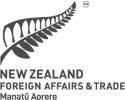On this page
CPTPP markets were the destination for 28.8% of New Zealand’s goods exports, worth NZ$20.4 billion in the year ended December 2024.
CPTPP provides New Zealand exporters with preferential access, into Japan, the world’s fourth-largest economy for the first time.
CPTPP is also New Zealand’s first free trade agreement (FTA) with Peru, Canada and Mexico (the latter two are respectively the world’s ninth and 14th-largest economies).
In some cases this restores a level playing field for our exporters in markets where competitors have enjoyed tariff preferences.
Removing tariffs over time
Tariffs will be eliminated on 92.2% of New Zealand’s exports to these new FTA partners once CPTPP is fully phased in removing tariffs of NZ$222 million per year. Over 40% of the tariff savings were achieved when CPTPP entered into force.
CPTPP also eliminates tariffs on New Zealand exports to Malaysia and Viet Nam that are not already subject to tariff elimination in previous FTAs, such as wine, as well as liquid milk to Malaysia and exports such as fish and seafood to Viet Nam.
In addition to eliminating tariffs, the CPTPP also helps to grow the value of trade and diversify New Zealand's trading relationships. Many of the benefits from tariff liberalisation are likely to go to regional New Zealand where primary sector farmers and growers are based.
Goods outcomes by sector
Tariff liberalisation in the region will create new opportunities for New Zealand exporters across the CPTPP region. This document sets out the tariff savings for key sectors based on current trade, although New Zealand will also benefit from increased trade and diversification of trading relationships.
For particular products, you can look up tariffs under CPTPP and compare them to other free trade agreements at tariff-finder.govt.nz(external link).
Meat
Key benefits for the beef and sheepmeat sector include:
- Japan, New Zealand’s fifth-largest beef export market, will reduce its 38.5% tariff on beef to 9% over 16 years. This is the lowest tariff on beef Japan has ever agreed to in a trade agreement and will ensure that New Zealand is on a level playing field with other CPTPP exporters with existing FTAs. There will be a volume-based transitional safeguard in Japan, which will apply equally to all CPTPP exporters. The World Trade Organization safeguard applied against New Zealand frozen beef exports does not apply to New Zealand trade now CPTPP is in force.
- Canada, New Zealand’s fourth-largest beef export market, eliminated all tariffs and quotas on New Zealand beef over six years, allowing unrestricted duty free access.
- Mexico and Peru will eliminate beef tariffs within 10 and 11 years respectively.
- Nearly all tariffs on sheepmeat were eliminated upon entry into force, including locking in preferential rates to Canada (New Zealand’s seventh-largest sheepmeat market). All tariffs were eliminated within eight years, with existing zero duty access locked in.
- Japan's tariffs on offal and processed meats, will be eliminated over 13 years with a 50% reduction at entry into force. Tariffs on processed meats were eliminated at entry into force in Canada for lines of trade interest.
Dairy
CPTPP provides New Zealand improved access into the CPTPP region where current access is highly restricted by high tariffs and small quotas.
Key products and markets that will see tariff elimination once CPTPP is fully implemented include:
- A number of protein products have tariffs eliminated in Japan and Canada, most at entry into force.
- Tariffs on most cheese types will be eliminated in Japan over 16 years.
- Tariffs on infant formula were eliminated in Canada and Mexico.
- Malaysia will eliminate liquid milk tariffs over 16 years. During the tariff elimination period, Malaysia will provide quota access for 2 million litres of liquid milk to all CPTPP Parties, with a zero in-quota tariff. This will be in addition to the quota volumes already provided for under the Australia-ASEAN-New Zealand FTA (AANZFTA) and the Malaysia-New Zealand FTA (MNZFTA).
Reflecting sensitivities among several of the Parties, tariffs will not be completely eliminated on all dairy products. Instead, New Zealand gained access to tariff quotas for a number of key products in Japan, Mexico and Canada. These quotas will provide New Zealand with new dairy market access to these important markets.
Horticulture
Tariffs will be eliminated on all of our fruit and vegetable exports across the CPTPP region.
Key benefits for the horticulture sector include:
- All tariffs for kiwifruit were eliminated at entry into force and existing duty free access locked in. This included duty free access to Japan – New Zealand’s third-largest kiwifruit market – representing tariff-related savings of more than NZ$26 million.
- All tariffs on apples would be eliminated within 11 years. This would level the playing field with Australian apple exporters, who already enjoy preferential access into Japan.
- Japan and Mexico will eliminate tariffs on avocado at entry into force.
- Japan will eliminate tariffs on squash and capsicum at entry into force.
- Japan will eliminate tariffs on carrot and other vegetable juices over six years
- Tariffs on onions have been eliminated into Canada, Japan and Peru, and will be eliminated after 15 years in Mexico.
- Canada, Mexico, and Japan have eliminated tariffs on cherries.
Wine
Key benefits for the wine sector include:
- New Zealand wine exporters benefit from the removal of all tariffs on wine, opening up new opportunities in several of New Zealand’s most important wine export markets. This includes Malaysia and Viet Nam, which had not eliminated wine tariffs in their previous FTAs with New Zealand.
- New Zealand gained tariff-free access for all wine into Canada (New Zealand’s fourth-largest wine export destination) at entry into force. Peru will eliminates tariffs for bottled still wine and Mexico for sparkling wine at entry into force.
- Mexico, Peru, and Japan have now eliminated wine tariffs for New Zealand wine exports, after three, six, and eight years, respectively.
- Viet Nam will eliminate wine tariffs over 11 years and Malaysia over 16 years.
Forestry
Key benefits for the forestry sector include:
- All tariffs on New Zealand forestry and forestry products were eliminated as part of CPTPP.
- Tariffs eliminated on all forestry products in Viet Nam, including some paper and paperboard products which were not subject to tariff elimination in AANZFTA.
Fish and seafood
Key benefits for the fish and seafood sector include:
- All tariffs are eventually eliminated on fish and seafood product under CPTPP, with the majority of duty savings on entry into force of the agreement.
- All of New Zealand’s fish and fish products imported into Japan currently face tariffs. Ninety-nine percent of these tariffs would be eliminated within 11 years, and the remainder within 16 years
- All existing fisheries tariffs in Canada were eliminated at entry into force.
- At entry into force, Mexico tariffs were eliminated for mussels, which account for 99% of the tariffs levied on New Zealand fish and seafood trade with Mexico.
- At entry into force, all existing tariffs Peru levies on fish and seafood will be eliminated, giving New Zealand complete duty-free market access.
- All tariffs on Vietnamese fish and seafood will be removed within four years, including a number of lines not eliminated in AANZFTA.
Wool, leather and textiles
Key benefits for these sectors include:
- All tariffs were eliminated on wool, leather and textiles products under CPTPP. All tariffs on wool products for Japan and Canada were eliminated at entry into force.
- Tariffs on hides and skins were eliminated at entry into force for Canada and Peru. Tariffs for Mexico will be eliminated within 10 years, and for Japan in 11 years.
Other agricultural goods
Key benefits for the other agricultural goods sector includes:
- In Japan at entry into force, tariffs were eliminated on soups and broths, sphagnum moss and cooking sauces.
- Tariffs on honey into Japan were eliminated over 8 years.
- Tariffs were eliminated on entry into force in Canada on dog or cat food and certain spirits.
- In Mexico tariffs were eliminated at entry into force on deer meat and wool grease.
- In Viet Nam and Malaysia there is tariff elimination for products of trade interest not eliminated in existing FTAs, such as beer and spirits.
Industrial goods
Key benefits for the industrial goods sector includes:
- CPTPP will eliminate all tariffs levied on the import of New Zealand manufactured goods in the CPTPP region.
- Over 90% of New Zealand’s manufactured goods trade with these new FTA partners became duty free once CPTPP entered into force.
- All remaining tariffs on New Zealand’s manufacturing goods exports to Viet Nam not removed in New Zealand’s existing FTA with Viet Nam (AANZFTA) were also eliminated.

